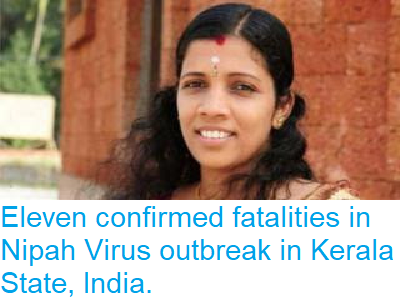At least fifteen people have died following a landslide at Rajamalai in Idduki District, Kerala, on Friday 7 August 2020. The landslide, which occurred after several days of continuous heavy rain associated with the annual Monsoon, hit a workers' settlement associated with a tea plantation where about eighty five people are believed to have resided, more-or-less completely destroying it. Although only fifteen bodies have been recovered so far, around fifty more people are still missing, so it is likely the death tole will rise as the site is cleared.
The aftermath of a landslide which hit the village of Rajamalai in Idduki District, Kerala, on Friday 7 August 2020. ANI.
Monsoons
are tropical sea breezes triggered by heating of the land during the
warmer part of the year (summer). Both the land and sea are warmed by
the Sun, but the land has a lower ability to absorb heat, radiating it
back so that the air above landmasses becomes significantly warmer than
that over the sea, causing the air above the land to rise and drawing in
water from over the sea; since this has also been warmed it carries a
high evaporated water content, and brings with it heavy rainfall. In the
tropical dry season the situation is reversed, as the air over the land
cools more rapidly with the seasons, leading to warmer air over the
sea, and thus breezes moving from the shore to the sea (where air is
rising more rapidly) and a drying of the climate.
Diagrammatic representation of wind and rainfall patterns in a tropical monsoon climate. Geosciences/University of Arizona.
Kerala
has a complex seasonal cycle, driven by the presence of the Western
Ghats mountain range, which largely block the dry northerly winds which
dominate the climate of much of India, and its proximity to the equator,
which leads to a double monsoon system. Such a double Monsoon Season is common
close
to the equator, where the Sun is highest overhead around the equinoxes
and lowest on the horizons around the solstices, making the solstices
the coolest part of the year and the equinoxes the hottest. In
Kerala this results in a Southwest Monsoon, which lasts from May to
September, and is driven by winds from the southern Arabian Sea dumping
water onto the Western Ghats, followed by a Northwest Monsoon, which
lasts from October to December, where winds from the Bay of Bengal do
the same. Of the two monsoons, the southwest is the wetter, due to the
proximity of the sea, with June typically being the wettest month, with an average of 341 mm of rain falling in the month.
See aslo...
Follow Scieny Thoughts on Facebook.








